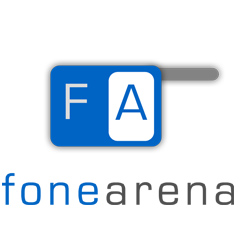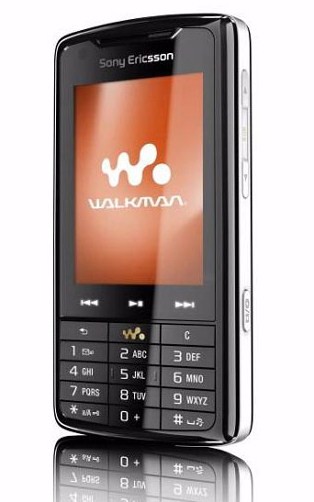Mobile handset users today are treated as God by the mobile handset manufacturing companies. Even if the customer says something with respect to the mobile it can of great importance to the manufacturer. Mobiles like other products get damaged and people get them repaired from the company certified repair centers. Continue reading “Sony Ericsson Using SMS for Customer Feedback”
Category: Technology
Latest Mobile Technology
Animated SMS’
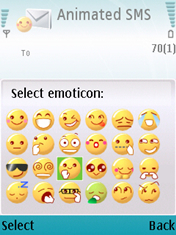 Sending and receiving SMS is growing at rapid pace. People are so much into sending SMS that a new SMS language has come up and most of the SMS are written in that language, they way it used to be for instant messengers. Continue reading “Animated SMS’”
Sending and receiving SMS is growing at rapid pace. People are so much into sending SMS that a new SMS language has come up and most of the SMS are written in that language, they way it used to be for instant messengers. Continue reading “Animated SMS’”
BSNL to launch CDMA services
By mid-2008, Bharat Sanchar Nigam Limited, BSNL, will offer CDMA services to mobile users across the country.
The application rendered by BSNL for a full-fledged CDMA mobility license has been approved. Since BSNL is State-owned, it was exempted from shelling out Rs 1,651-crores entry fee, performance bank guarantee fee etc for the CDMA license.

“The initial investment for this project will be approximately $500 million,” said BSNL CMD, Kuldeep Goyal.
SMS Alerts in Chhattisgarh to inform if Rice is available at the Ration Store
The Chhattisgarh government has launched a scheme under which families who qualify to receive 35 kilos Rice at subsidised rates (Rs 3 per kilo) under the Public Distribution System (PDS), will be intimated about the availability of the grain at Ration centres by SMS.
This facility will be provided from 26th January, Republic Day.
According to sources, the poverty-stricken families will have to register details of their mobile phones at the website of the food and civil supplies department, along with details of their nearest PDS shop. Continue reading “SMS Alerts in Chhattisgarh to inform if Rice is available at the Ration Store”
Sony Ericsson W960i Official launch
The handset has been in the market for more than a month. But Sony Ericsson launched it officially a few days ago.
So what is the Sony Ericsson W960i?
It is a walkman phone with 160 MB phone memory that can store about 25 hours of music listening time. It has an 8GB in-built flash memory that can sore an astounding 8000 songs. A touch phone that has a super screen to watch videos or browse the Web.
Samsung SCH- i760 Your new mobile office
These model numbers are so confusing. Why don’t Mobile companies just give their unique handsets a nickname?
The Samsung SCH i760 is unique. It is a good looking handset with a unique arrangement of keys and navigation pad on the body. It is a Windows Mobile smart phone with a slide out, full QWERTY keypad.
Samsung G800 Worlds FIRST 5 megapixel Auto focus Camera phone
Yup, that’s what they say… Samsung G800 has a 5 whopping megapixels with auto focus! Not just that, it also has a 3x optical zoom and a Xenon flash. Why do I need a digicam now that I can have this beauty?
And yes, it’s a beauty. A slim slider handset, it is a ‘pretty’ phone.
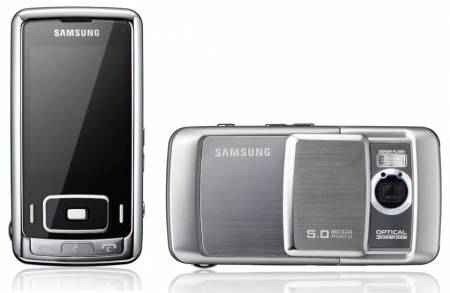
Its also a high tech phone. The face detection, image editor and mobile blogging feature are truly worth looking forward to.
Specs at a glance: Continue reading “Samsung G800 Worlds FIRST 5 megapixel Auto focus Camera phone”
Samsung SGH- i780 – Windows Mobile with TV out and optical mouse
Samsung SGH- i780 is a Kinda regular looking handset…
It has a 2.5 inch touch screen as well as a full QWERTY keypad.
The interesting bits are a) the TV out option and b) optical mouse for navigation.
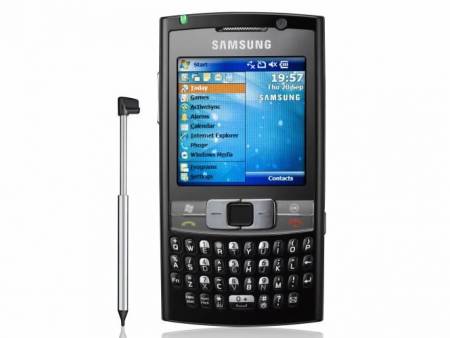
Specs at a glance:
• HSDPA 3.6 mbps/ 900/1800/1900 MHz + UMTS 2100MHz, EDGE, GPRS Class Continue reading “Samsung SGH- i780 – Windows Mobile with TV out and optical mouse”
CES 2008: Samsung launches SGH-i450, G800, SGH-i620, SCH-i760
Here’s more news from the Consumer Electronics Show 2008 on at Las Vegas. This time, it is Samsung. Four new models – SGH-i450, G800, SGH-i620, SCH-i760.
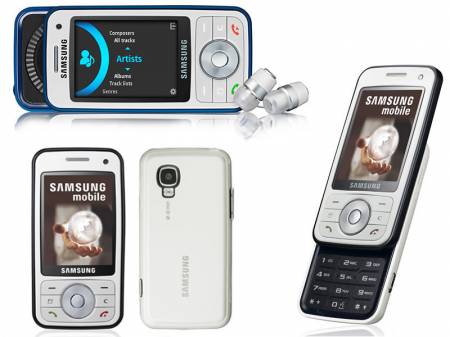
Phew! Somebody’s been working very very hard.
Samsung SGH-i450
Symbian S60 OS powered music phone in a slide form factor that will take your breath away. It has a type of touch sensitive scroll wheel system to navigate the music player and menus. Continue reading “CES 2008: Samsung launches SGH-i450, G800, SGH-i620, SCH-i760”
Motorola innovations from CES – Moto Z10, Rokr E8 and more
It’s rocking time for all you mobile lovers out there.
Sony Ericsson revealed 3 new models at the CES (Consumer Electronics Show) 2008 in Las Vegas recently. Read Fonearena’s coverage of the new releases here.
Motorola has followed suit and unveiled four handsets at the Show, two brand new handsets, Moto Z10 & Rokr E8 and two enhanced versions of existing models, W230 & W270.
Moto Z10
Nicknamed the “pocket-sized mobile film studio”, the Z10, based on the Symbian operating system will allow users to play and capture high-quality video, marry audio and video, and create storyboards with soundtracks directly on the phone.
If you are a film enthusiast, you can even upload the video/movie on various social networking websites.
 Continue reading “Motorola innovations from CES – Moto Z10, Rokr E8 and more”
Continue reading “Motorola innovations from CES – Moto Z10, Rokr E8 and more”
Sony Ericsson W760,W350,Z555 from Sony Ericsson at CES 2008
Sony Ericsson released three new handsets simultaneously ushering in the new year with a running start.
The handsets are W760, W350 and Z555.
Sony Ericsson W760 – The Global Walkman
A feature packed handset that has a walkman (as its nickname suggests), with distinctive stereo speakers and latest games, including Need for Speed™ ProStreet.
 Continue reading “Sony Ericsson W760,W350,Z555 from Sony Ericsson at CES 2008”
Continue reading “Sony Ericsson W760,W350,Z555 from Sony Ericsson at CES 2008”
Home Automation: Control it through your mobile
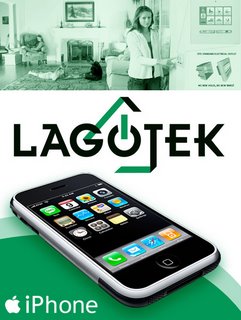
We have been hearing and reading of “intelligent” homes where you can control everything with the click of a button. Turn on the geyser at the stipulated hour and turn it off too; a system that ensures your coffee brews by itself and the curtains in your bedroom draw automatically at dusk; lights turn on when you walk into the bathroom and the flush is activated when you get off the seat.
Unimaginable? Unbelievable? But wait…there is more!
All these systems can be controlled through the internet; so whether you are at work or out of town, you can log into your home and check if the LPG valve in your kitchen is turned off; or activate your intrusion alarm system to keep burglars away. Continue reading “Home Automation: Control it through your mobile”
Now send kisses using your phone
You might have sent SMS, MMS , greeting cards using your mobile phone
.
But have you ever exchanged kisses with your loved ones using your phone ?
This Chinese phone will help the users simulate and exchange kisses .
Is this believable ? I’m not convinced
Nokia Siemens Networks bags multi-million Euro IVR deal from Bharti Airtel
If your on Airtel Network , You can expect a lot of Voice Based services from Bharti Airtel in the coming years
Nokia Siemens has just bagged a multi-million euro deal from Bharti Airtel for deployment of a single Interactive Voice Response (IVR) . Bharti Airtel awarded this pan India contract to Nokia Siemens Networks for deployment of a single Interactive Voice Response (IVR) platform across all 23 circles. The three year turnkey and multi-million Euro contract includes designing, planning, systems integration and optimization services to enhance overall customer experience. The new IVR solution will enable Airtel to deliver Services such as Voice SMS, Televoting, Call Management Services (Reach-me service / Missed Call Advisor), Caller Ring back Tone (CRBT) and Voice Portal among others on a faster time-to-market basis, reduce OPEX costs due to optimized network utilization, and increase security by creation of a layered architecture towards Interactive Voice applications.
Nokia Siemens Networks will deploy and integrate the latest state-of-the-art platforms to provide a multi-technology, multi-vendor integrated solution that includes systems integration services. The platforms are HP OCMP (Open Call Management Platform), Video Gateway, Televoting Application and ASR/TTS (Automatic Speech Recognition / Text-to-Speech Engine. The solution will be ready for commercial operation by April 2008 and is expected to scale up to one billion minutes of usage per month in three years for Bharti Airtel. Continue reading “Nokia Siemens Networks bags multi-million Euro IVR deal from Bharti Airtel”
Mobile Job Search courtesy Monster India
Online job search websites have made the life of today’s job searchers easy. Just type in the position name and the city you will get a list of jobs, which might be of interest to you.
 Continue reading “Mobile Job Search courtesy Monster India”
Continue reading “Mobile Job Search courtesy Monster India”
